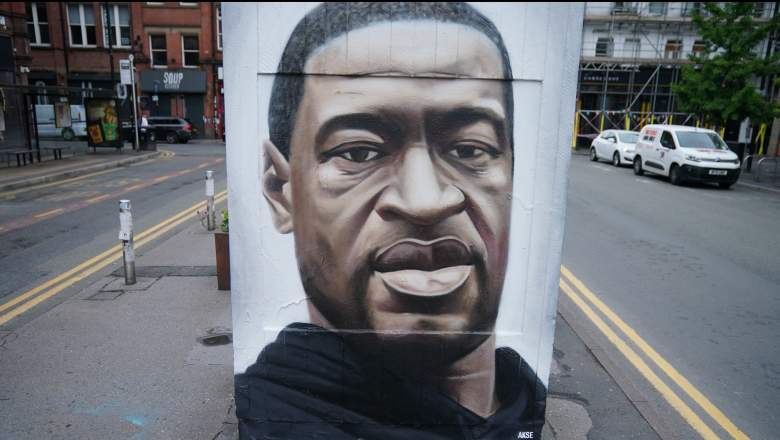
Getty Floral tributes lay next to a mural of George Floyd, by street artist Akse, in Manchester's northern quarter.
Actor and SAG-AFTRA Foundation President Courtney B. Vance was a guest on SiriusXM’s “The Joe Madison Show” to discuss the impact of the coronavirus crisis on Hollywood, the need for real change following George Floyd‘s death and the defining moments of his life.
During the interview, the actor shared a “defining moment” he remembers when he was a kid and a soldier threatened him with a bayonet during the Detroit, Michigan riots in the 1960s. “We grew up in Detroit in ’68, with the riots in ’67, and we lived on West Grand Boulevard, and the tanks came right down our street,” said Vance.
“And I was into G.I. Joe, and I went down, we were sitting on our, our house looked right down onto, and we had a long front lawn that went down to the Boulevard, and I saw a G.I. Joe and I took off, before my parents could get me. Because I was going to get G.I. Joe! And the soldier turned his bayonet on me. And I was in shock by the time my mother and father were on me, and they pulled me back. Defining moment.”

Here, Vance attends the premiere of FX’s American Crime Story – The People V. O.J. Simpson at Westwood Village Theatre on January 27, 2016 in Westwood, California. His resemblance to his character is amazing. (Getty)
Courtney B. Vance also discussed the murder of George Floyd and how there needs to be no more excuses for white violence. “That was a hunters move,” he said.
“That’s a deer and they sit on the deer’s neck until the fight goes out and the deer just suffocates and dies after he’s been shot so he doesn’t buck around and stab you with his antlers. It was a hunters move. Do you understand that? That’s a man there. That’s somebody’s father, that’s somebody’s uncle, that’s somebody’s brother, that’s somebody’s son. That’s a man. That’s every man that just went under. Because that’s what they said. This is a power move. This is about power. It’s about power, and it’s not about technology, what we need to film more. The camera was on him. He knew the camera was on, and he did it anyway. If that was a white man that was suffocated like that; this image is in my mind: the police off to the side of the road, beating a black woman. She was under, he was on top of her and just wailing on her…And when they’re like that, we just go, ‘oh well, that’s a black woman, she must’ve been doing something and he’s just doing his job, he feared for his life.’ Stop it! Stop the feared for his life excuse. Stop that. That’s enough of that. That’s what people are saying.”